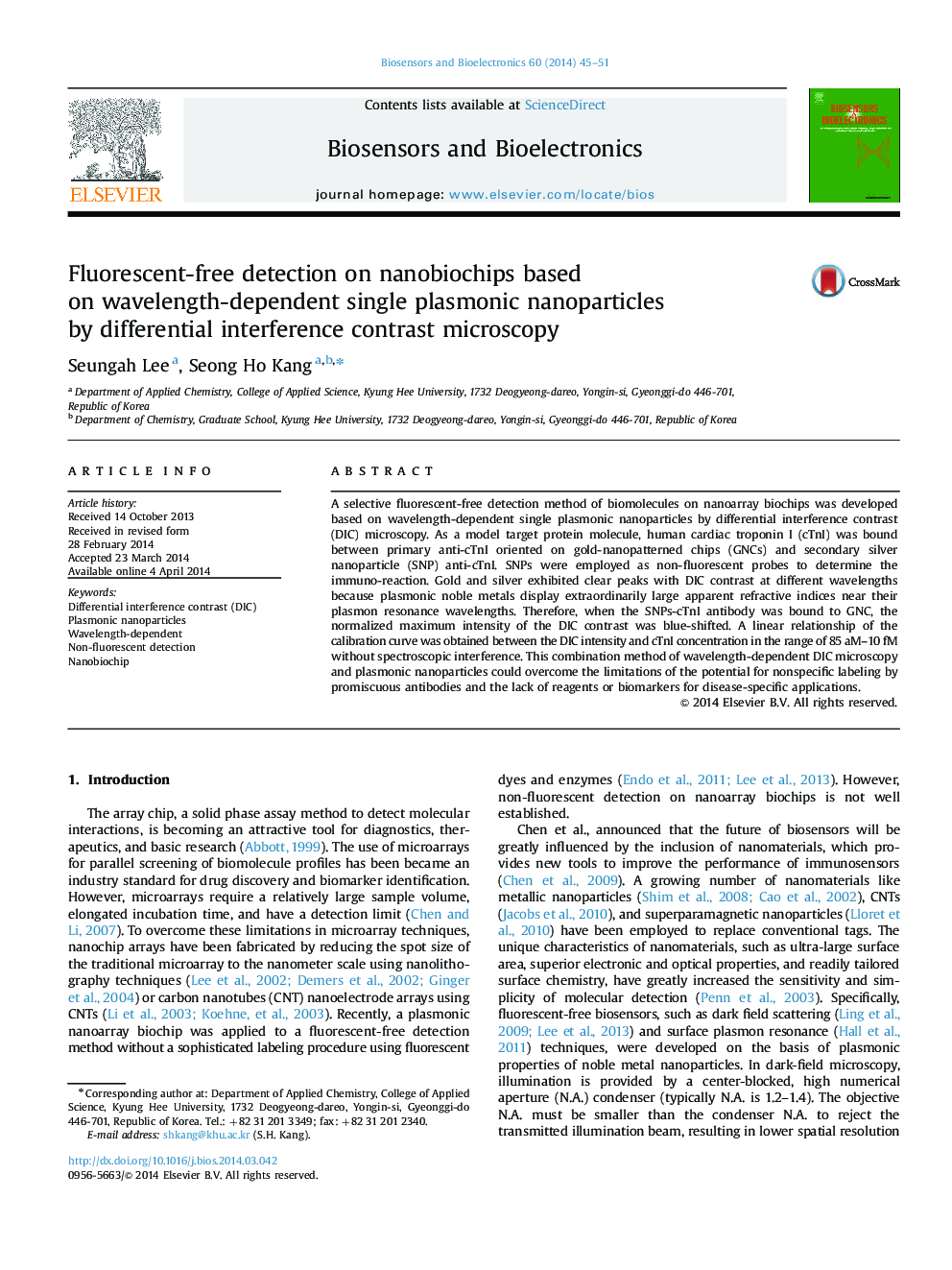| Article ID | Journal | Published Year | Pages | File Type |
|---|---|---|---|---|
| 866415 | Biosensors and Bioelectronics | 2014 | 7 Pages |
•Selective fluorescent-free detection of biomolecules on nanoarray biochips.•First combination of wavelength-dependent DIC and plasmonic nanoparticles on nanobiochips.•Single-nanoparticle immunoassay on chips using wavelength-dependent plasmonic nanoparticle.•Highly sensitive fluorescent-free detection of cTnI with a detection limit of 85 aM.
A selective fluorescent-free detection method of biomolecules on nanoarray biochips was developed based on wavelength-dependent single plasmonic nanoparticles by differential interference contrast (DIC) microscopy. As a model target protein molecule, human cardiac troponin I (cTnI) was bound between primary anti-cTnI oriented on gold-nanopatterned chips (GNCs) and secondary silver nanoparticle (SNP) anti-cTnI. SNPs were employed as non-fluorescent probes to determine the immuno-reaction. Gold and silver exhibited clear peaks with DIC contrast at different wavelengths because plasmonic noble metals display extraordinarily large apparent refractive indices near their plasmon resonance wavelengths. Therefore, when the SNPs-cTnI antibody was bound to GNC, the normalized maximum intensity of the DIC contrast was blue-shifted. A linear relationship of the calibration curve was obtained between the DIC intensity and cTnI concentration in the range of 85 aM–10 fM without spectroscopic interference. This combination method of wavelength-dependent DIC microscopy and plasmonic nanoparticles could overcome the limitations of the potential for nonspecific labeling by promiscuous antibodies and the lack of reagents or biomarkers for disease-specific applications.
